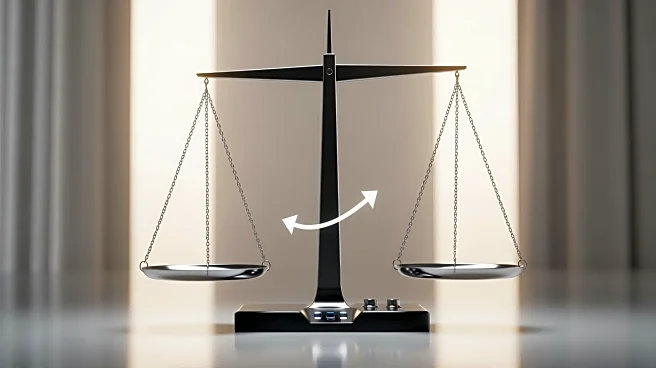What's Happening?
WTW has reported a flat revenue of $2.29 billion for the third quarter of 2025, maintaining the same level as the previous year. This stability comes despite the sale of its direct-to-consumer insurance distribution business, TRANZACT, which impacted
last year's results. The company achieved an organic growth rate of 5% for the quarter, slightly down from 6% in the same period last year. WTW's Risk & Broking segment, which includes Corporate Risk & Broking and Insurance Consulting and Technology, saw a revenue increase to $1.01 billion, driven by new business and project-based placements. However, the Insurance Consulting and Technology business reported flat revenue due to cautious client spending amid economic uncertainty. For the first nine months of 2025, WTW's revenue was $6.77 billion, with a net income of $877 million, a significant improvement from a loss of $1.34 billion in the previous year.
Why It's Important?
The financial performance of WTW highlights the company's resilience and strategic focus in a challenging economic environment. The flat revenue, coupled with organic growth, indicates a stable market position despite the divestiture of TRANZACT. The increase in the Risk & Broking segment's revenue suggests a successful adaptation to market demands, particularly in global specialty businesses. This performance is crucial for stakeholders, as it reflects WTW's ability to maintain profitability and growth potential. The company's strategic decisions, such as focusing on high-margin segments and managing economic uncertainties, are likely to influence investor confidence and market perception.
What's Next?
WTW's future strategy will likely focus on enhancing its market-leading solutions and executing its growth strategy effectively. The company may continue to explore opportunities for organic growth and strategic acquisitions to strengthen its market position. Stakeholders will be keenly observing how WTW navigates economic uncertainties and manages client relationships to sustain its growth trajectory. The company's ability to adapt to changing market conditions and leverage its strengths in risk and broking will be critical in maintaining its competitive edge.















